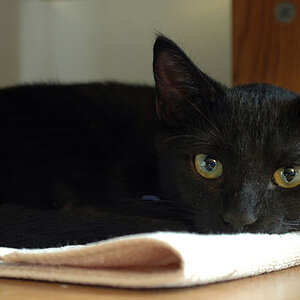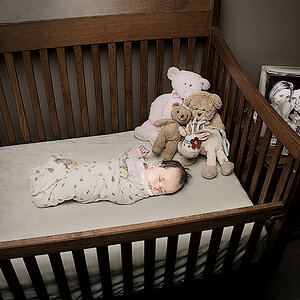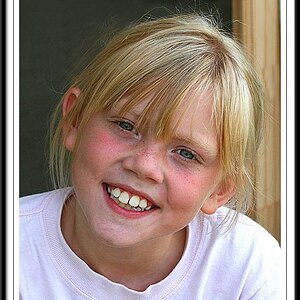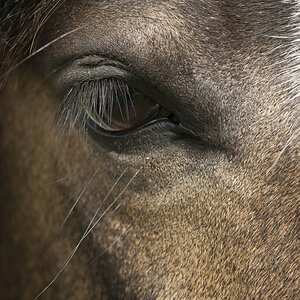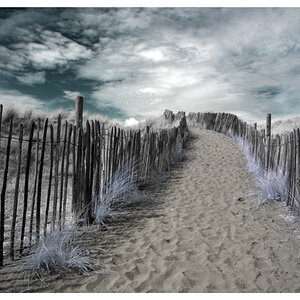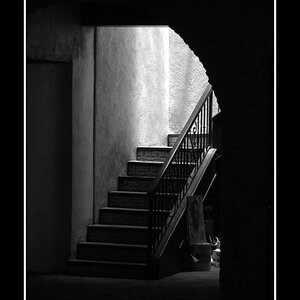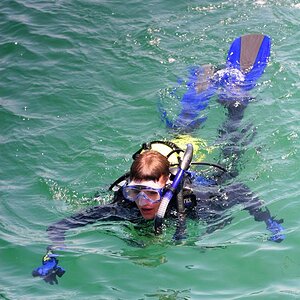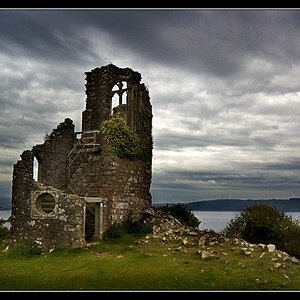Navigation
Install the app
How to install the app on iOS
Follow along with the video below to see how to install our site as a web app on your home screen.

Note: This feature currently requires accessing the site using the built-in Safari browser.
More options
You are using an out of date browser. It may not display this or other websites correctly.
You should upgrade or use an alternative browser.
You should upgrade or use an alternative browser.
I need to take infrared aerial photography. Any advice on what to buy?
- Thread starter agrippa
- Start date
2WheelPhoto
TPF Noob!
- Joined
- Apr 14, 2011
- Messages
- 6,844
- Reaction score
- 996
- Location
- Tampa
- Can others edit my Photos
- Photos OK to edit
That question is so generic google may answer? Or you can wait for 20 different forum answers too


- Joined
- Sep 2, 2003
- Messages
- 34,533
- Reaction score
- 7,560
- Location
- In the mental ward of this forum
- Can others edit my Photos
- Photos NOT OK to edit
You "need" to take it? If this is some kind of class, you should get the info you need from your instructor. There aren't a lot of choices for infrared film these days. It can be done digitally with the right kind of filter. Aerial photography is its own specialty, with specialty equipment. It's unlikely you'll be asked to buy it. To answer your question, you'll have to be a bit more specific about what you're doing.
You "need" to take it? If this is some kind of class, you should get the info you need from your instructor. There aren't a lot of choices for infrared film these days. It can be done digitally with the right kind of filter. Aerial photography is its own specialty, with specialty equipment. It's unlikely you'll be asked to buy it. To answer your question, you'll have to be a bit more specific about what you're doing.
This is a project for a professor, but it's my independent research project and I'm applying for grant money to buy what I need. The idea is to create infrared images of a landscape using a helicopter drone that I also intend to build. I need advice about what camera to purchase in order to get good infrared imagery.
Trever1t
Been spending a lot of time on here!
- Joined
- Dec 30, 2010
- Messages
- 9,331
- Reaction score
- 2,722
- Location
- San Jose, CA
- Website
- wsgphotography.com
- Can others edit my Photos
- Photos NOT OK to edit
my limited understanding of IR imagery as it applied to DSLRs is it takes removal of a filter addition of another and a LONG exposure (simplified). Can't see how a long exposure on an UAV is going to work?
- Joined
- May 1, 2008
- Messages
- 25,422
- Reaction score
- 5,003
- Location
- UK - England
- Website
- www.deviantart.com
- Can others edit my Photos
- Photos OK to edit
For a digital camera you'll have to have it Infra-Red modified. This basically involves them stripping a layer of filter material from infront of the camera sensor itself. Once removed they replace it either with clear or a filter which blocks out all light but IR light. If they use the latter the camera can only shoot IR from then on - if they use the former it can shoot normal or IR by attaching a filter to the end of the lens itself.
From what you say is your intent I would get a cheap entry level digital camera body and have it modified (there are companies out there which do this) for IR. Once done you'll have a camera capable of IR photography and importantly with the modifications it will be able to take them with a fast shutter speed.
If you just apply an IR filter to the front of a regular DSLR without modification the camera can take IR photos ,but because the filter in front of the sensor is blocking out the IR light you have to use slow shutter speeds (tripod and remote control work) to get a good exposure (so no use at all for air photography).
As for a good rig for aerial photography you'll have to google around for that - there are a few rigs suitable to carry a DSLR for photography - these are normally on hire rather than for purchase (though if you've a big enough budget there are no limits). Custom building is another path, but might be more complex and you might also have to budget for crashes!
From what you say is your intent I would get a cheap entry level digital camera body and have it modified (there are companies out there which do this) for IR. Once done you'll have a camera capable of IR photography and importantly with the modifications it will be able to take them with a fast shutter speed.
If you just apply an IR filter to the front of a regular DSLR without modification the camera can take IR photos ,but because the filter in front of the sensor is blocking out the IR light you have to use slow shutter speeds (tripod and remote control work) to get a good exposure (so no use at all for air photography).
As for a good rig for aerial photography you'll have to google around for that - there are a few rigs suitable to carry a DSLR for photography - these are normally on hire rather than for purchase (though if you've a big enough budget there are no limits). Custom building is another path, but might be more complex and you might also have to budget for crashes!
Trever1t
Been spending a lot of time on here!
- Joined
- Dec 30, 2010
- Messages
- 9,331
- Reaction score
- 2,722
- Location
- San Jose, CA
- Website
- wsgphotography.com
- Can others edit my Photos
- Photos NOT OK to edit
Aren't shutter speeds for IR measured in seconds? I was under that impression?
- Joined
- May 1, 2008
- Messages
- 25,422
- Reaction score
- 5,003
- Location
- UK - England
- Website
- www.deviantart.com
- Can others edit my Photos
- Photos OK to edit
Aren't shutter speeds for IR measured in seconds? I was under that impression?
If you just use an IR filter on a regular DSLR yes because of the IR blocking filter in front of a DSLR sensor. If you have it modded to remove that blocking filter I'm led to understand that you'll get pretty normal exposure times as you would with regular light (at least when shooting in natural sunlight).
2WheelPhoto
TPF Noob!
- Joined
- Apr 14, 2011
- Messages
- 6,844
- Reaction score
- 996
- Location
- Tampa
- Can others edit my Photos
- Photos OK to edit
- Joined
- Sep 2, 2003
- Messages
- 34,533
- Reaction score
- 7,560
- Location
- In the mental ward of this forum
- Can others edit my Photos
- Photos NOT OK to edit
Okay. My husband was an aerial photographer for a couple of decades and shot infrared film for the occasional mission when it was needed. Originally IR film was valued for its ability to cut through atmospheric haze. It gained favor with fine art photographers because of its unique look.You "need" to take it? If this is some kind of class, you should get the info you need from your instructor. There aren't a lot of choices for infrared film these days. It can be done digitally with the right kind of filter. Aerial photography is its own specialty, with specialty equipment. It's unlikely you'll be asked to buy it. To answer your question, you'll have to be a bit more specific about what you're doing.
This is a project for a professor, but it's my independent research project and I'm applying for grant money to buy what I need. The idea is to create infrared images of a landscape using a helicopter drone that I also intend to build. I need advice about what camera to purchase in order to get good infrared imagery.
This project of yours is no small feat. A grant to build a helicopter drone....? Worrying about IR shots should come after you get it off the ground. If you could get a budget, it would seem to be more cost effective to rent a helicopter to take you out to get the shots you need. If you are located in the U.S., you could start by approaching a private aerial company. These are folks who do this for a living, and could give you pointers on how to assemble the gear you'll want to use. True film aerial cameras will give you 9x9" negatives - big enough cameras to require special mounts in the plane or copter. I'm sure the digital equivalent is just as hefty.
I'm not trying to rain on your parade, just that what you are attempting is highly specialized. You'll need to find a specialty group of folks to advise you. You might want to make sure you have funding for your project, too, when you start approaching people. Best of luck!
Helen B
TPF Noob!
- Joined
- Sep 16, 2007
- Messages
- 3,296
- Reaction score
- 467
- Location
- Hell's Kitchen, New York
- Can others edit my Photos
- Photos NOT OK to edit
IR aerial photography is a lot easier and cheaper than it used to be. You probably know about the low-cost drones that are capable of carrying and controlling decent P&S, micro 4/3 and NEX cameras, with wireless video feed, like Draganfly (link). Digital Silver (link) do IR conversions of P&S and micro 4/3 cameras as well as other types. All digital IR - IR film is not really ideal for this purpose.
As already explained by Overread, exposures with an IR-modified camera are similar to 'normal' exposures - I have an IR bridge camera and it is no problem.
You will have to choose a filter. You can choose between different IR 'cuts' - ie whether or not the filter allows a little red light through - or you can use a deep yellow filter. The latter means that you can take false color IR photographs - the blue channel only records IR, the green records green + IR and the red records red + IR. These can be re-arranged later to give IR, green and red channels, similar to false-color Ektachrome.
If only someone could invent a camera that recorded Moriarty Negative Waves. You could do an aerial survey to detect dangerous concentrations of them before they did any harm. Low levels are, of course, mildly beneficial and often stimulating.
As already explained by Overread, exposures with an IR-modified camera are similar to 'normal' exposures - I have an IR bridge camera and it is no problem.
You will have to choose a filter. You can choose between different IR 'cuts' - ie whether or not the filter allows a little red light through - or you can use a deep yellow filter. The latter means that you can take false color IR photographs - the blue channel only records IR, the green records green + IR and the red records red + IR. These can be re-arranged later to give IR, green and red channels, similar to false-color Ektachrome.
If only someone could invent a camera that recorded Moriarty Negative Waves. You could do an aerial survey to detect dangerous concentrations of them before they did any harm. Low levels are, of course, mildly beneficial and often stimulating.
Last edited:
GrantH
TPF Noob!
- Joined
- Dec 14, 2010
- Messages
- 380
- Reaction score
- 13
- Location
- Hattiesburg, MS
- Can others edit my Photos
- Photos OK to edit
You want to create landscape imagery via budget flight equipment? Sorry. Maybe looks on the USGS site for what you are wanting.
Similar threads
- Replies
- 13
- Views
- 400
- Replies
- 1
- Views
- 92
- Replies
- 6
- Views
- 637

